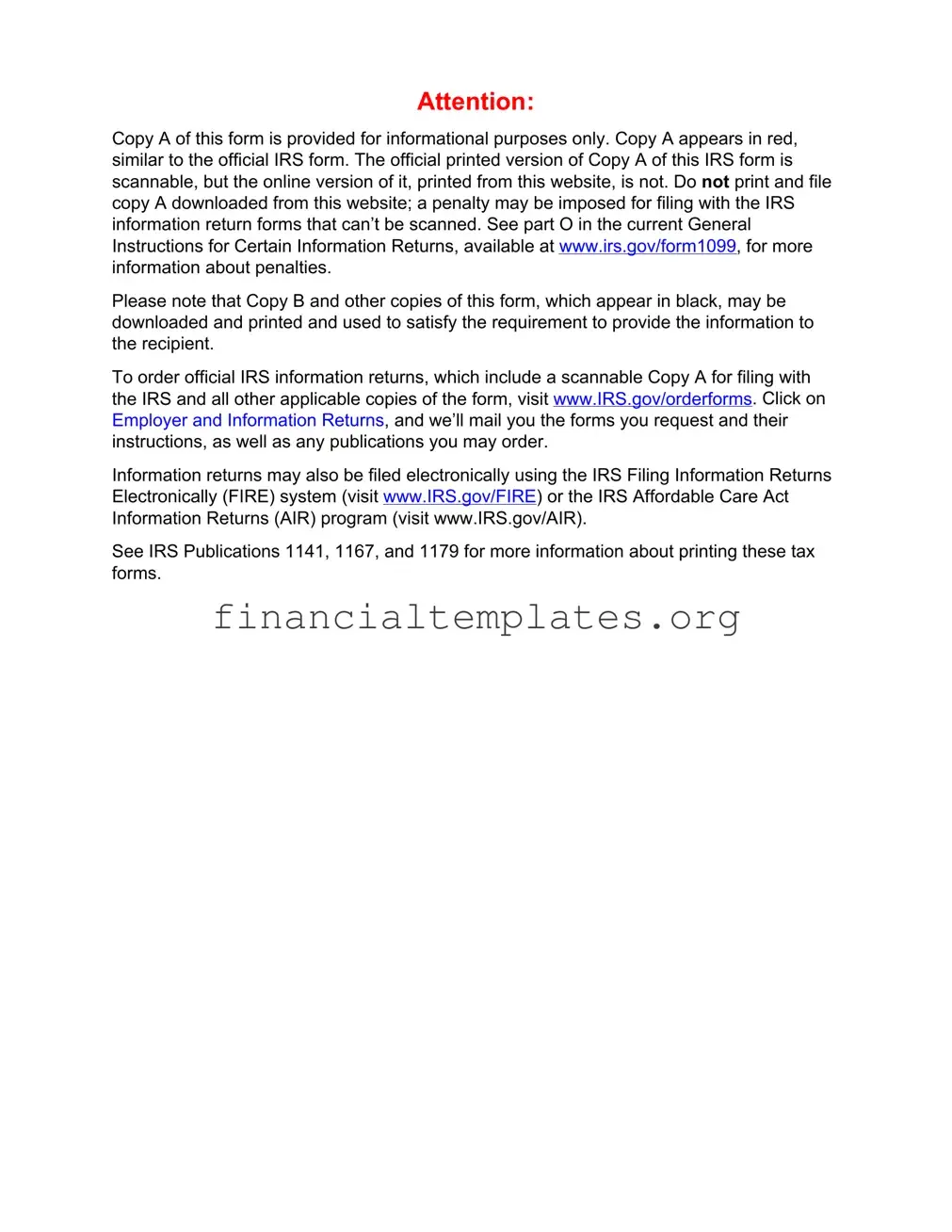Instructions for Payer/Borrower
A person (including a financial institution, a governmental unit, and a cooperative housing corporation) who is engaged in a trade or business and, in the course of such trade or business, received from you at least $600 of mortgage interest (including certain points) on any one mortgage in the calendar year must furnish this statement to you.
If you received this statement as the payer of record on a mortgage on which there are other borrowers, furnish each of the other borrowers with information about the proper distribution of amounts reported on this form. Each borrower is entitled to deduct only the amount each borrower paid and points paid by the seller that represent each borrower’s share of the amount allowable as a deduction. Each borrower may have to include in income a share of any amount reported in box 4.
If your mortgage payments were subsidized by a government agency, you may not be able to deduct the amount of the subsidy. See the instructions for Schedule A, C, or E (Form 1040) for how to report the mortgage interest. Also, for more information, see Pub. 936 and Pub. 535.
Payer’s/Borrower’s taxpayer identification number (TIN). For your protection, this form may show only the last four digits of your TIN (SSN, ITIN, ATIN, or EIN). However, the issuer has reported your complete TIN to the IRS.
Account number. May show an account or other unique number the lender has assigned to distinguish your account.
Box 1. Shows the mortgage interest received by the recipient/lender during the year. This amount includes interest on any obligation secured by real property, including a mortgage, home equity loan, or line of credit. This amount does not include points, government subsidy payments, or seller payments on a “buydown” mortgage. Such amounts are deductible by you only in certain circumstances.
! |
If you prepaid interest in the calendar year that accrued in full by |
▲ |
January 15, of the subsequent year, this prepaid interest may be |
included in box 1. However, you cannot deduct the prepaid |
amount in the calendar year paid even though it may be included in |
CAUTION |
box 1. |
|
If you hold a mortgage credit certificate and can claim the mortgage interest credit, see Form 8396. If the interest was paid on a mortgage, home equity loan, or line of credit secured by a qualified residence, you can only deduct the interest paid on acquisition indebtedness, and you may be subject to a deduction limitation.
Box 2. Shows the outstanding principal on the mortgage as of January 1 of the calendar year. If the mortgage originated in the calendar year, shows the mortgage principal as of the date of origination. If the recipient/lender acquired the loan in the calendar year, shows the mortgage principal as of the date of acquisition.
Box 3. Shows the date of the mortgage origination.
Box 4. Do not deduct this amount. It is a refund (or credit) for overpayment(s) of interest you made in a prior year or years. If you itemized deductions in the year(s) you paid the interest, you may have to include part or all of the box 4 amount on the “Other income” line of your calendar year Schedule 1 (Form
1040). No adjustment to your prior year(s) tax return(s) is necessary. For more information, see Pub. 936 and Itemized Deduction Recoveries in Pub. 525.
Box 5. If an amount is reported in this box, it may qualify to be treated as deductible mortgage interest. See the calendar year Schedule A (Form 1040) instructions and Pub. 936.
Box 6. Not all points are reportable to you. Box 6 shows points you or the seller paid this year for the purchase of your principal residence that are required to be reported to you. Generally, these points are fully deductible in the year paid, but you must subtract seller-paid points from the basis of your residence. Other points not reported in box 6 may also be deductible. See Pub. 936 to figure the amount you can deduct.
Box 7. If the address of the property securing the mortgage is the same as the payer’s/borrower’s, either the box has been checked, or box 8 has been completed.
Box 8. Shows the address or description of the property securing the mortgage.
Box 9. If more than one property secures the loan, shows the number of properties securing the mortgage. If only one property secures the loan, this box may be blank.
Box 10. The interest recipient may use this box to give you other information, such as real estate taxes or insurance paid from escrow.
Box 11. If the recipient/lender acquired the mortgage in the calendar year, shows the date of acquisition.
Future developments. For the latest information about developments related to Form 1098 and its instructions, such as legislation enacted after they were published, go to www.irs.gov/Form1098.
Free File. Go to www.irs.gov/FreeFile to see if you qualify for no-cost online federal tax preparation, e-filing, and direct deposit or payment options.





 CORRECTED (if checked)
CORRECTED (if checked)